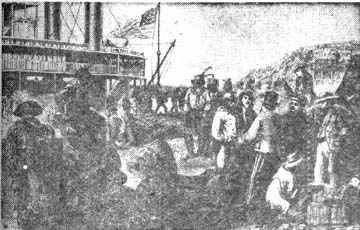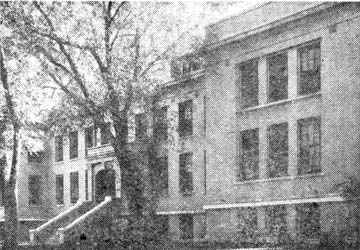
No. 59--State Historical Society
Conquerors sweep thru a nation or state bent only on conquest; traders camp on its borders intent only on immediate gains; missionaries kneel on its soil with the welfare of souls in mind; pioneers break the sod for the purpose of putting four walls around their families, bread in their mouths. It falls to the historian to follow after these men of one purpose, to gather up the fragments; to keep alive, in words at least, the spark struck off by fleeing hoof or flintlock or ringing ax.
Musing with half-closed eyes one can see a throng of people entering Nebraska, spreading out over it in patterns interesting and intricate. One can see a giant, colorful picture painted on the plains, even hear the throng moving to simple slow strains of music--and realize how literature, painting, music, are born of movements of people, individual or en masse.
There is no lack of romance in the building of Nebraska, beginning with its Indians--ships with adventurers and settlers sailing far up the rivers; the Mormon migration; the underground railroad (slaves were sold on the block in southeast Nebraska in the early sixties); the fight for the capital, the building of the railroads (which reminds us ___ilding of the Union Pacific given by the Ballet Russe _____oln several years ago); ____ Bill Hickok, Doc Middleton _____ir brother bandits; the _____ between homesteade______ __ow men in the north ____of the state. The Stat__ __ ical Society, state capio_____A. E. Sheldon, superintend ___as all this locked in ___ and file and safe-excep__ _nteresting exhibits spread __ its walls. The picture above, drawn at Omaha for Leslie's Sept. 26, 1860, depicts the arrival in that pioneer village of the Jennie Brown, bound for Fort Benton, Mont. It is one of over thirty thousand pictures filed by the librarian, Martha Turner, pertaining to the history of the state.
(note: hole in the page)
